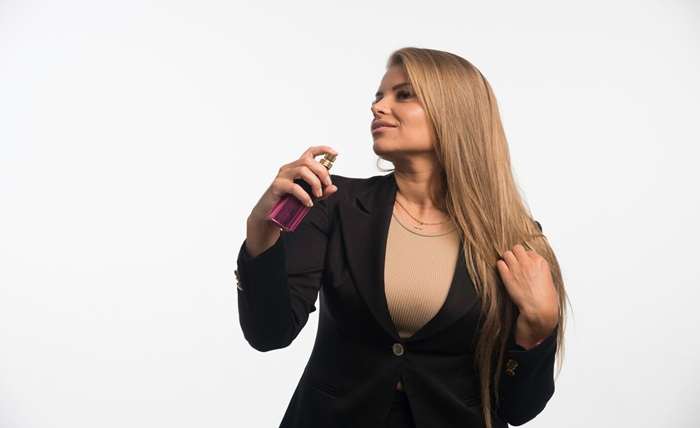
The global fragrance industry is a multi-billion-dollar market that continues to evolve, driven by changing consumer preferences, advancements in technology, and shifting retail trends. The demand for women perfume remains a significant force behind the industry’s expansion, with luxury brands, niche perfumers, and mainstream manufacturers competing for market share. As consumer behaviors shift toward personalized experiences and sustainability, the perfume industry is adapting to meet these demands while maintaining its status as a cornerstone of the beauty sector.
The resilience of the fragrance market can be attributed to its ability to merge tradition with innovation. While iconic brands continue to dominate, new players are emerging, offering unique, sustainable, and customized scent experiences. Understanding the factors driving growth in the women’s perfume industry provides insight into the future of this evolving market.
The Market Landscape of Women’s Perfume
The fragrance industry has shown consistent growth over the years, with the global market for women’s perfumes estimated to be worth over $30 billion. Several factors contribute to this sustained expansion:
- Luxury Brand Influence – High-end fashion houses such as Chanel, Dior, and Gucci continue to drive premium fragrance sales through branding, celebrity endorsements, and exclusivity.
- Niche Perfumery Boom – Independent fragrance houses and niche brands are gaining traction, catering to consumers looking for unique, high-quality scents.
- Digital Transformation – E-commerce and direct-to-consumer (DTC) sales models have changed how perfumes are marketed and purchased, allowing for greater accessibility.
- Sustainability Initiatives – Ethical sourcing, eco-friendly packaging, and clean fragrance formulations are becoming essential selling points.
These factors indicate that while the traditional elements of the fragrance industry remain strong, new trends and consumer priorities are reshaping the business.
The Influence of Changing Consumer Preferences
Consumer behavior plays a crucial role in the evolution of the perfume market. As modern shoppers become more informed and selective, brands must adapt to their evolving preferences. Some key shifts in consumer demand include:
1. The Rise of Personalization
Consumers are looking for unique scents that align with their personalities rather than mass-market fragrances. Many brands now offer customizable perfumes, where buyers can select fragrance notes that suit their preferences.
2. Clean and Sustainable Perfumes
There is growing awareness about the environmental and health impacts of synthetic ingredients in perfumes. Consumers are actively seeking brands that use natural, cruelty-free, and non-toxic formulations. This shift has led to an increase in demand for botanical and organic fragrances.
3. Experience-Driven Purchases
More than ever, consumers are buying fragrances based on experiences rather than just scent notes. Brands are marketing perfumes with emotional storytelling, nostalgic references, and immersive in-store experiences to enhance customer engagement.
4. Growth of Online Perfume Shopping
While perfume has traditionally been an in-store purchase due to the need to sample scents, digital advancements have made online shopping more appealing. Augmented reality (AR) scent testing, AI-driven recommendations, and sample subscription services have helped bridge the gap between digital and physical fragrance experiences.
The Business Strategy Behind Women Perfume Sales
For brands looking to expand in the competitive fragrance market, adapting to industry shifts is crucial. Successful perfume companies implement several business strategies to maintain their position:
- Limited Edition and Seasonal Releases – Creating exclusivity through limited production runs encourages impulse buying and brand loyalty.
- Luxury and Designer Brand Extensions – Many high-fashion brands extend their product lines into perfumery, leveraging their existing customer base.
- Direct-to-Consumer (DTC) Sales – Bypassing traditional retail models allows brands to offer personalized shopping experiences and control their marketing narratives.
- Celebrity and Influencer Collaborations – Endorsements from celebrities and influencers boost visibility, making perfumes more desirable to target demographics.
These strategies ensure that brands remain competitive in a market that thrives on exclusivity, quality, and emotional appeal.
The Role of Emerging Markets in Fragrance Growth
While established markets such as Europe and North America continue to drive perfume sales, emerging markets in the Middle East, Asia, and Latin America are contributing significantly to global expansion.
- Middle East – The region has a long history of fragrance appreciation, with oud-based and oriental scents in high demand. Luxury brands cater to this market by creating exclusive fragrances featuring traditional ingredients.
- Asia-Pacific – Countries such as China and South Korea are seeing an increase in perfume consumption, fueled by the rise of personal luxury goods and beauty trends.
- Latin America – Brazil, in particular, is a leading consumer of fine fragrances, with demand driven by both local brands and international names.
As disposable incomes rise and luxury markets expand in these regions, the perfume industry is poised for continued global growth.
Challenges Facing the Women’s Perfume Industry
Despite its growth, the fragrance industry faces several challenges that brands must navigate:
- Counterfeit Products – The rise of counterfeit perfumes in online and offline markets affects brand reputation and consumer trust.
- Saturation of the Market – With so many fragrances launching each year, standing out in a crowded industry requires innovation and strong branding.
- Regulatory and Environmental Concerns – Stricter regulations around ingredient sourcing, packaging, and sustainability practices are forcing brands to rethink traditional production methods.
- Consumer Fatigue – Some consumers feel overwhelmed by the number of perfume options available, making brand differentiation crucial.
Navigating these challenges requires businesses to stay ahead of industry trends, invest in sustainability, and create meaningful consumer connections.
The women’s fragrance market continues to grow, driven by luxury brands, niche perfumers, and evolving consumer preferences. Women perfume is not just about scent—it is a representation of personal identity, luxury, and innovation. As sustainability, personalization, and digital transformation reshape the industry, brands that adapt to these trends will maintain their competitive edge.
While challenges such as market saturation and counterfeit products remain, the industry’s ability to evolve and embrace change ensures its ongoing expansion. With the rise of emerging markets, increased digital engagement, and a shift toward clean and sustainable fragrances, the future of the perfume business remains strong.